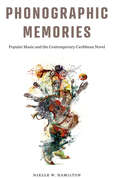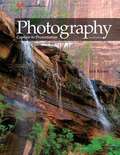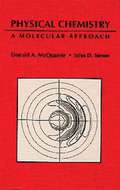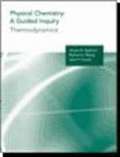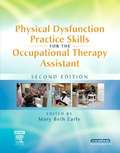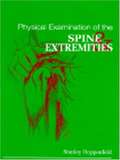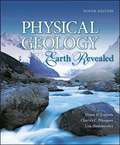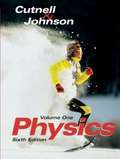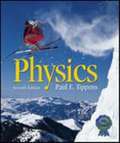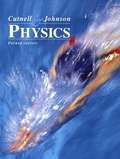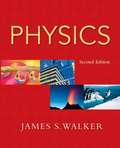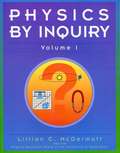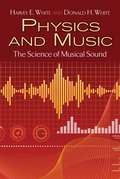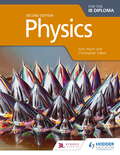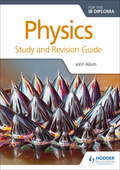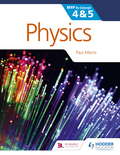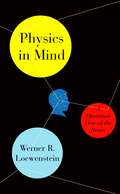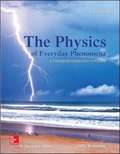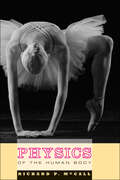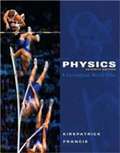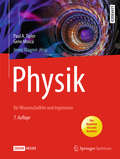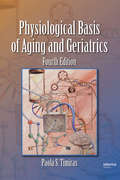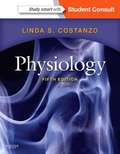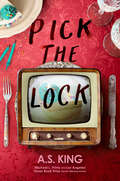- Table View
- List View
Phonographic Memories: Popular Music and the Contemporary Caribbean Novel (Critical Caribbean Studies)
by Njelle W. HamiltonPhonographic Memories is the first book to perform a sustained analysis of the narrative and thematic influence of Caribbean popular music on the Caribbean novel. Tracing a region-wide attention to the deep connections between music and memory in the work of Lawrence Scott, Oscar Hijuelos, Colin Channer, Daniel Maximin, and Ramabai Espinet, Njelle Hamilton tunes in to each novel’s soundtrack while considering the broader listening cultures that sustain collective memory and situate Caribbean subjects in specific localities. These “musical fictions” depict Caribbean people turning to calypso, bolero, reggae, gwoka, and dub to record, retrieve, and replay personal and cultural memories. Offering a fresh perspective on musical nationalism and nostalgic memory in the era of globalization, Phonographic Memories affirms the continued importance of Caribbean music in providing contemporary novelists ethical narrative models for sounding marginalized memories and voices. Njelle W. Hamilton's Spotify playlist to accompany Phonographic Memories: https://spoti.fi/2tCQRm8
Photography: Capture To Presentation
by Jack KlaseyDesigned for use as a first course in the basics of photography, focusing on the application of photographic principles to the field of digital imaging. The text provides a solid knowledge base for the student, covering the essential tools and techniques of photography. Emphasis is on color digital photography to permit concentration on basic skill development, but film cameras and developing techniques are also included. The textbook includes the use of image-editing software and the "digital darkroom", with practical examples of techniques for correcting, enhancing, and creatively manipulating images. After learning the fundamentals, the reader learns about photography situations such as action and event photography, outdoor photography, travel photography, and portrait and studio photography.
Physical Chemistry: A Molecular Approach
by Donald A. Mcquarrie John D. SimonThis book provides a contemporary approach to the study of physical chemistry. By beginning with quantum chemistry, students will learn the fundamental principles upon which all modern physical chemistry is built.
Physical Chemistry: Thermodynamics
by James N. Spencer Richard S. Moog John J. FarrellDesigned to encourage active and collaborative learning in the physical chemistry classroom, this text is a collection of group activities (ChemActivities) that can accompany any physical chemistry text.
Physical Dysfunction Practice Skills For The Occupational Therapy Assistant
by Mary Beth EarlyAimed at students training to become occupational therapy assistants, this textbook teaches key techniques designed to help patients to participate in personally selected and valued occupations. It is assumed that students have already completed basic anatomy and physiology and foundation OT courses. The second edition has been revised to conform to the AOTA's Occupational Therapy Practice Framework.
Physical Examination of the Spine and Extremities
by Stanley HoppenfeldUseful to students and clinicians, this text covers the process of physical examination of the spine and extremities.
Physical Geology: Earth Revealed, Ninth Edition
by Charles C. Plummer Diane H. Carlson Lisa HammersleyThe ninth edition has been updated to include the most current information from the various sub-disciplines that comprise physical geology. The book's purpose is to clearly present geologic processes so that students can understand the logic of scientific methods. This text features an outstanding art program and a proven, accessible writing style.
Physics (6th Edition)
by John D. Cutnell Kenneth W. JohnsonThis Sixth Edition helps readers understand the interrelationships among basic physics concepts and how they fit together to describe our physical world. Throughout the book, the authors emphasize the relevance of physics to our everyday lives. Real-world physics applications, including many biomedical applications, show how physics principles come into play over and over again in our lives. Problem Solving Insights explain each calculation in detail, guiding readers through the quantitative process Includes a CD containing physics simulations
Physics (7th Edition)
by Paul E. Tippens"Physics, Seventh Edition" is designed for the non-calculus physics course taken by students who are pursuing careers in science or engineering technology. Content is built through extensive use of examples with detailed solutions designed to develop students' problem-solving skills.
Physics (Fourth Edition)
by John D. Cutnell Kenneth W. JohnsonThe book facilitates both learning and teaching processes. It aims at helping students develop conceptual understanding and use it for solving problems in areas like Thermal Physics, Magnetism, Light, Optics, Modern Physics etc.
Physics (Second Edition)
by James S. WalkerThis introduction to algebra-based physics covers the full spectrum of topics in Mechanics, Thermal Physics, Electromagnetism, Light and Optics, and Modern Physics.
Physics By Inquiry: An Introduction to Physics and the Physical Sciences, Vol. 1
by Lillian C. Mcdermott Physics Education Group StaffThese volumes consist of a set of interactive based modules that offer a step-by-step introduction to physics and the physical sciences. Through an in-depth study of a few fundamental concepts, readers develop critical scientific reasoning skills. Volume 1 introduces basic physical ideas and includes topics which represent the essential background for the study of physical sciences.
Physics and Music: The Science of Musical Sound (Dover Books on Physics)
by Donald H. White Harvey E. WhiteThis foundational text is written for students who want to go beyond the perceptual stage of music to learn how musical sound is created and perceived. It surveys a wide range of topics related to acoustics, beginning with a brief history of the art and science of music. Succeeding chapters explore the general principles of sound, musical scales, the primary ways in which sound can be generated, the characteristics of instruments, the use of mechanical and electronic recording devices, hi-fi stereophonic and quadraphonic sound, the design of electronic musical instruments, and architectural acoustics.Comprehensive yet accessible, Physics and Music includes over 300 diagrams, photographs, and tables. Each chapter concludes with questions, problems, and projects, in addition to references for further study. 1980 edition.
Physics for the IB Diploma Second Edition
by Christopher Talbot John AllumProvide clear guidance to the 2014 changes and ensure in-depth study with accessible content, directly mapped to the new syllabus and approach to learning.This bestselling textbook contains all SL and HL content, which is clearly identified throughout. Options are available free online, along with appendices and data and statistics.- Improve exam performance, with exam-style questions, including from past papers- Integrate Theory of Knowledge into your lessons and provide opportunities for cross-curriculum study- Stretch more able students with extension activities- The shift to concept-based approach to learning , Nature of Science, is covered by providing a framework for the course with points for discussion - Key skills and experiments included - Full digital package - offered in a variety of formats so that you can deliver the course just how you like!
Physics for the IB Diploma Study and Revision Guide
by John AllumStretch your students to achieve their best grade with these year round course companions; providing clear and concise explanations of all syllabus requirements and topics, and practice questions to support and strengthen learning. - Consolidate revision and support learning with a range of exam practice questions and concise and accessible revision notes- Practise exam technique with tips and trusted guidance from examiners on how to tackle questions- Focus revision with key terms and definitions listed for each topic/sub topic
Physics for the IB MYP 4 & 5: By Concept
by Paul MorrisMYP by Concept is the only series for years 4 and 5 developed with the IB.Drive meaningful inquiry for the new framework through a unique concept driven narrative.- Supports every aspect of assessment with opportunities that use the criteria- Gives you easy ways to differentiate and extend learning- Provides a meaningful approach by integrating the inquiry statement in a global context- Develops critical-thinking skills with activities and summative sections rooted in the ATL frameworkAlso coming soon are Teaching and Learning Resources and eTextbooks via Dynamic Learning, our complete digital solution
Physics in Mind: A Quantum View of the Brain
by Werner R. LoewensteinNo one can escape a sense of awe when reflecting on the workings of the mind: we see, we hear, we feel, we are aware of the world around us. But what is the mind? What do we mean when we say we are "aware” of something? What is this peculiar state in our heads, at once utterly familiar and bewilderingly mysterious, that we call awareness or consciousness? In Physics in Mind, eminent biophysicist Werner R. Loewenstein argues that to answer these questions, we must first understand the physical mechanisms that underlie the workings of the mind. And so begins an exhilarating journey along the sensory data stream of the brain, which shows how our most complex organ processes the vast amounts of information coming in through our senses to create a coherent, meaningful picture of the world. Bringing information theory to bear on recent advances in the neurosciences, Loewenstein reveals a web of immense computational power inside the brain. He introduces the revolutionary idea that quantum mechanics could be fundamental to how our minds almost instantaneously deal with staggering amounts of information, as in the case of the information streaming through our eyes. Combining cutting-edge research in neuroscience and physics, Loewenstein presents an ambitious hypothesis about the parallel processing of sensory information that is the heart, hub, and pivot of the cognitive brain. Wide-ranging and brimming with insight, Physics in Mind breaks new ground in our understanding of how the mind works.
Physics of Everyday Phenomena (Eighth Edition)
by W. Thomas Griffith Juliet W. BrosingThe Physics of Everyday Phenomena, Eighth Edition, introduces students to the basic concepts of physics using examples of common occurrences in everyday life. Intended for use in a one-semester or two-semester course in conceptual physics, this book is written in a narrative style, frequently using questions designed to draw the reader into a dialogue about the ideas of physics. This inclusive style allows the book to be used by anyone interested in exploring the nature of physics and explanations of everyday physical phenomena. Beginning students will benefit from the large number of student aids and the reduced math content. Professors will appreciate the organization of the material and the wealth of pedagogical tools.
Physics of the Human Body
by Richard P. McCallRichard P. McCall's fascinating book explains how basic concepts of physics apply to the fundamental activities and responses of the human body, a veritable physics laboratory. Blood pumping through our veins is a vital example of Poiseuille flow; the act of running requires friction to propel the runner forward; and the quality of our eyesight demonstrates how properties of light enable us to correct near- and far-sightedness. Each chapter discusses a fundamental physics concept and relates it to the anatomy and physiology of applicable parts of the body. Topics include motion, fluids and pressure, temperature and heat, speech and hearing, electrical behaviors, optics, biological effects of radiation, and drug concentrations. Clear and compelling, with a limited amount of math, McCall's descriptions allow readers of all levels to appreciate the physics of the human physique. Physics of the Human Body will help curious high school students, undergraduates with medical aspirations, and practicing medical professionals understand more about the underlying physics principles of the human body.
Physics: A Conceptual World View (7th edition)
by Larry Kirkpatrick Gregory E. FrancisDesigned specifically for non-majors, PHYSICS: A CONCEPTUAL WORLD VIEW provides an engaging and effective introduction to physics using a flexible, fully modular presentation ideal for a wide variety of instructors and courses. Incorporating highly effective Physics Education Research pedagogy, the text features an ongoing storyline describing the development of the current physics "world view," which provides students with an understanding of the laws of nature and the context to better appreciate the importance of physics. The text's appealing style and minimal use of math also help to make complex material interesting and easier to master, even for students normally intimidated by physics or math. For instructors who want to incorporate more problem-solving skills and quantitative reasoning, the optional, more detailed, "Problem Solving to Accompany Physics: A Conceptual World View" student supplement reveals more of the beauty and power of mathematics in physics. The text can also be customized to fit any syllabus through Cengage Learning's TextChoice custom solution program. In addition, the new Seventh Edition includes a thoroughly revised art program featuring elements such as balloon captions and numerous illustrations to help students better visualize and understand key concepts.
Physik
by Paul A. Tipler Gene Moscajenny WagnerDas Standardwerk in der rundum erneuerten Auflage - der gesamte Stoff bis zum Bachelor: jetzt auch mit spannenden Einblicken in die aktuelle Forschung! Verständlich, einprägsam, lebendig und die perfekte Prüfungsvorbereitung, mit unzähligen relevanten Rechenbeispielen und Aufgaben - dies ist Tiplers bekannte und beliebte Einführung in die Experimentalphysik. Klar und eingängig führt Tipler den Leser durch die physikalische Begriffs- und Formelwelt illustriert von unzähligen liebevoll gestalteten Farbgrafiken. Studienanfänger - egal, ob sie Physik im Hauptfach studieren oder ob es als Nebenfach auf dem Lehrplan steht - finden hier Schritt für Schritt den klar verständlichen Einstieg in die Physik mittels · Verständlicher Aufarbeitung des Prüfungsstoffes · Zahlreichen prüfungsrelevanten Übungsaufgaben · Anschaulichen Grafiken · Durchgehender Vierfarbigkeit · Übersichtlichem und farbkodiertem Layout · Ausgearbeiteten Beispielaufgaben, vom Text deutlich abgesetzt · Zusammenfassungen zu jedem Kapitel mit den wichtigsten Gesetzen und Formeln für jede Prüfung · Schlaglichtern, die aktuelle Themen aus Forschung und Anwendung illustrieren · Problemorientierter Einführung in die mathematischen Grundlagen. Aus dem Inhalt: Mechanik; Schwingungen und Wellen; Thermodynamik; Elektrizität und Magnetismus; Optik; Relativitätstheorie; Quantenmechanik; Atom- und Molekülphysik; Festkörperphysik und Teilchenphysik . Beispielaufgaben zum Nachvollziehen und zum selbst Üben vermitteln die notwendige Sicherheit für anstehende Klausuren und mündliche Prüfungen. Sämtliche Übungsaufgaben sind außerdem im Arbeitsbuch zu diesem Lehrbuch ausführlich besprochen und durchgerechnet. Erweitert wird der studienrelevante Inhalt um zahlreiche Kurzeinführungen in spannende aktuelle Forschungsgebiete verfasst von namhaften Forschern der deutschsprachigen Forschungslandschaft. Die Autoren Paul A. Tipler promovierte an der University of Illinois über die Struktur von Atomkernen. Seine ersten Lehrerfahrungen sammelte er an der Wesleyen University of Connecticut. Anschließend wurde er Physikprofessor an der Oakland University, wo er maßgeblich an der Entwicklung des Lehrplans für das Physikstudium beteiligt war. Inzwischen lebt er als Emeritus in Berkeley, California. Gene Mosca hat über viele Jahre Physikkurse an amerikanischen Universitäten (wie Emporia State, University of South Dakota, Annapolis) gegeben und Web-Kurse entwickelt. Als Koautor der dritten und vierten englischen Ausgabe hat er die Studentenmaterialien gestaltet. Jenny Wagner (Hrsg. ) . . . .
Physiological Basis of Aging and Geriatrics (Fourth Edition)
by Paola S. TimirasThis Fourth Edition offers a complete profile of the aging process at all levels, from molecules and cells to demography and evolution. The text includes aspects of individual, comparative, and differential aging, and discussions of theories and mechanisms of aging.
Physiology (Fifth Edition)
by Linda S. CostanzoThis book offers a comprehensive overview of core physiologic concepts at the organ system and cellular levels.
Pick the Lock
by A.S. KingFrom Michael L. Printz Award winner A.S. King, a weird and insightful new novel about a girl intent on picking the lock of her toxic family.Jane Vandermaker-Cook would like her mother back. As Jane's mother tours the world to support the family, Jane lives and goes to school in a Victorian mansion with her younger brother and their mendacious father who confines Jane&’s mother to a system of pneumatic tubes whenever she&’s at home. And then there's weirdly ever-present Aunt Finch, Milorad the gardener, and his rat, Brutus. For Jane, this all seems normal until she suddenly gains access to the files for a lifetime of security-camera videos—her lifetime.A.S. King's latest surrealist masterpiece follows Jane&’s bizarre and brilliant journey to reconnect with her mother by breaking out of her shell and composing a punk opera.
